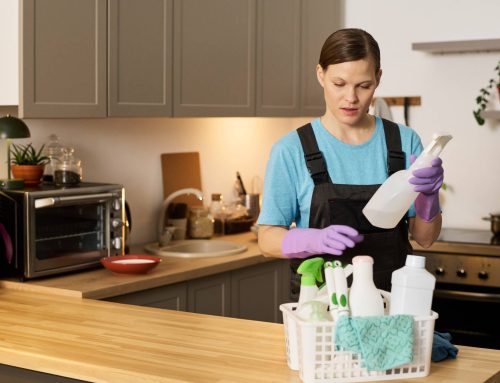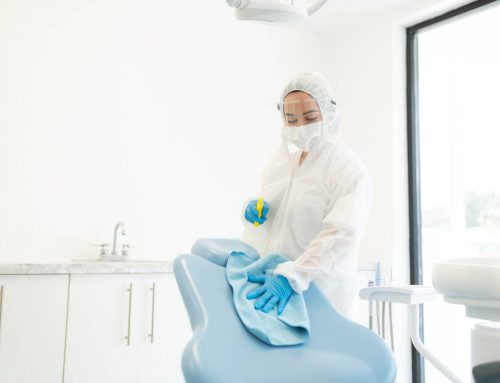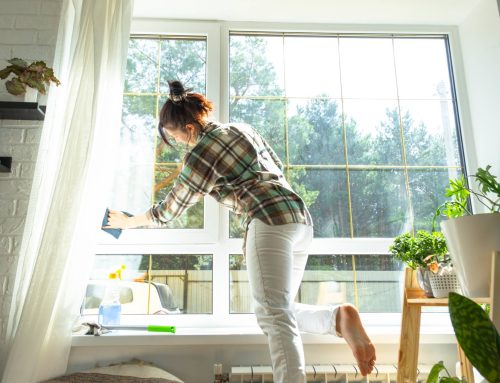Your home’s exterior is the first thing people see, but keeping it clean often involves harsh chemicals that can be tough on your landscaping and the environment. Many people believe that achieving a sparkling clean curb appeal requires a harsh chemical arsenal. What if you could get powerful results using natural ingredients that are safe for your family, pets, and plants? It is not only possible—it is easier than you think. This guide provides the ultimate breakdown of how to clean your home’s siding, gutters, and even your roof safely and effectively using simple, natural solutions. From natural all-purpose cleaner degreasers to understanding when to call a professional roofing company, this is your handbook for a healthier clean.
Why Go Green? The Benefits of Natural Exterior Cleaning
One of the most significant advantages of using natural cleaning solutions on your home’s exterior is the protection it offers your landscaping. Runoff from conventional chemical cleaners can contain bleach and other harsh agents that can damage or even kill lawns, flowers, and shrubs planted near the foundation. Eco-friendly, biodegradable solutions break down harmlessly and will not poison your soil or harm your green investments. This allows you to wash your home with peace of mind, knowing your garden is safe from toxic residue.
Furthermore, choosing natural products creates a safer environment for family and pets. There is no need to worry about harmful chemical residues left behind on surfaces where children or pets might play, such as decks, patios, or siding. Gentle, plant-based cleaners also preserve your home’s surfaces. Abrasive chemicals can sometimes strip paint or damage delicate materials like wood or certain types of vinyl siding over time. Natural cleaners effectively remove dirt and grime without causing this long-term harm, protecting both your family’s health and your property’s integrity.
Your Natural Cleaning Toolkit: Simple Ingredients, Powerful Results
Building an effective, eco-friendly exterior cleaning toolkit is simple and affordable. The foundation lies in a few key household staples. Distilled white vinegar is a natural acid that excels at dissolving grime and inhibiting the growth of mold and mildew. Baking soda acts as a gentle abrasive, perfect for scrubbing away stubborn stains without scratching surfaces. A good quality, biodegradable dish soap serves as a safe degreaser that helps lift dirt and environmental buildup from siding and other surfaces. For tougher jobs, oxygen bleach is a non-toxic, color-safe alternative to chlorine bleach that effectively kills algae and brightens surfaces.
To use these ingredients effectively, a few essential pieces of gear are required. A garden hose with an adjustable spray nozzle is necessary for rinsing. You will also need buckets for mixing your solutions and soft-bristled scrub brushes, preferably with long handles, for reaching higher areas. Most importantly, when working at any height, a sturdy, properly placed ladder is non-negotiable. Always prioritize safety by also equipping yourself with protective gear, including heavy-duty gloves to protect your hands and safety glasses to shield your eyes from splashes and debris.
Step 1: Cleaning Your Siding Naturally
Before you begin washing your siding, a little prep work goes a long way. Start by rinsing the siding with your garden hose to remove any loose dirt and dust. It is also a good idea to protect delicate plants and shrubs near the foundation with lightweight tarps or plastic sheeting. For an excellent all-purpose siding solution, simply mix a small amount of biodegradable dish soap and about a cup of white vinegar into a bucket of warm water. For areas with visible mildew, adding a scoop of powdered oxygen bleach will provide extra cleaning power.
The best technique is to work in manageable sections, starting from the bottom and working your way up to prevent streaking. Apply the cleaning solution using a soft brush or a low-pressure garden sprayer. Let it sit on the surface for five to ten minutes to allow it to break down the grime, but do not let it dry. Gently scrub any stubborn spots with your brush, then rinse the section thoroughly from the top down. This method is especially useful for cleaning up dust and grime after a renovation project.
Step 2: Clearing Gutters for a Healthy Home
Cleaning gutters is a critical maintenance task that protects your home from water damage. Safety is the top priority here. Ensure your ladder is placed securely on level ground and that you are comfortable working at that height. The most effective first step is to manually scoop out all the large debris. Wearing heavy-duty gloves, remove leaves, twigs, and other gunk with your hands or a small garden trowel, placing the debris into a bucket to keep your yard tidy.
Once the solid debris is gone, you can address any remaining grime. A simple spray made of vinegar and water can help clean out mildew stains inside the gutters. The final and most important step is to flush the entire system. Use your garden hose to spray water through the gutters and down the downspouts. This not only cleans out any lingering fine debris but also confirms that there are no hidden clogs in your downspouts. This is an essential task you should include it in your store’s spring cleaning to do list each year.
Step 3: A Gentle Approach to Roof Cleaning
In the humid climate of the Philippines, roofs are particularly susceptible to dark streaks caused by algae, as well as moss, which can damage roofing materials over time. It is crucial to use a gentle approach for this task. Never use a pressure washer on your roof, as the high-powered stream can strip the protective granules from shingles and potentially void your roof’s warranty. This kind of damage can lead to premature aging and leaks, creating a much bigger problem than the stains themselves.
A much safer and still effective solution is to use a gentle spray. A mix of water and oxygen bleach, or a specialized, biodegradable roof cleaner, can be lightly sprayed onto the roof using a pump-style garden sprayer. This solution works to kill the algae and moss. Over the next few weeks, rainfall will naturally wash the dead organic matter away. It is essential to prevent harmful mould and mildew from taking hold. However, for significant buildup or for anyone uncomfortable working on a roof, it is always best to consult a professional roofing company for proper care and cleaning to avoid causing damage.
A Clean Home, a Clear Conscience
Embracing a cleaning routine that is tough on grime but gentle on your home and the environment is a win-win situation. By using these simple, natural solutions, you can enjoy a beautiful, sparkling home exterior with complete peace of mind. The process proves that you do not need harsh chemicals to achieve impressive results. Regular, gentle cleaning is a form of preventative maintenance that protects your home’s value, structural integrity, and the health of your family and local ecosystem. If you have plans to sell your home, a clean and well-cared-for exterior can make a lasting first impression and help attract serious buyers. Start small by trying one DIY recipe this week or swapping one tool for a sustainable alternative. Every small change makes a big difference for your home and the planet.




